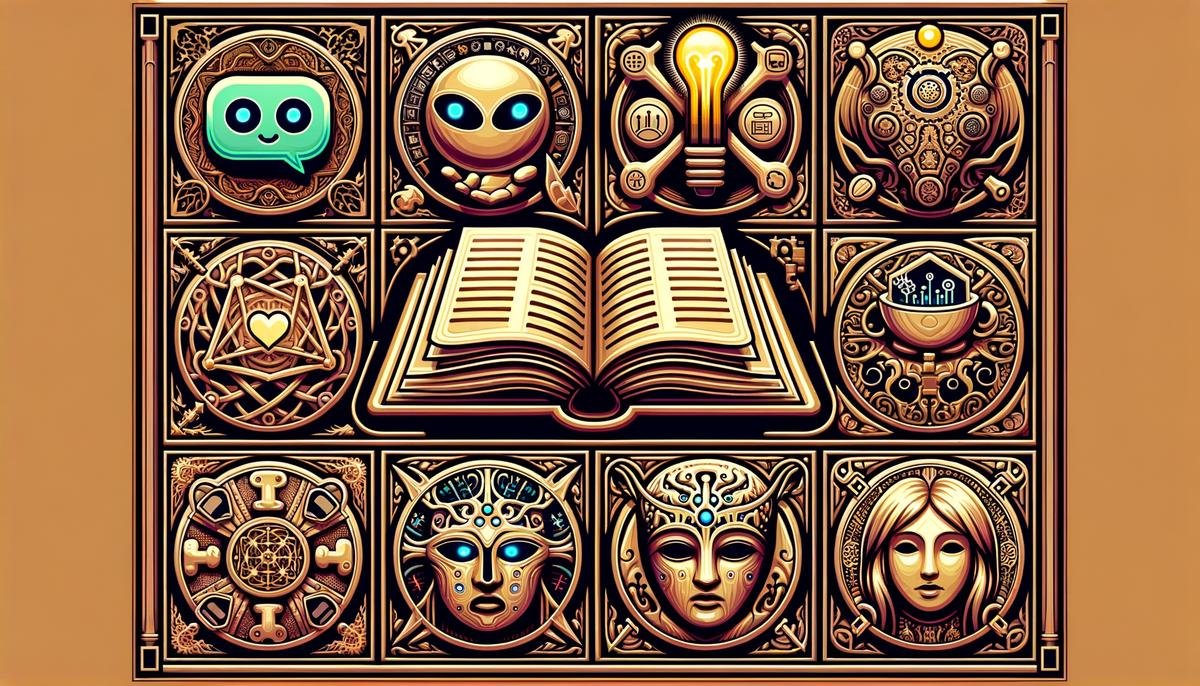AI Tools for Fiction Writing
ChatGPT aids in brainstorming and outlining, helping merge ideas and ensuring a solid narrative foundation. The GPT-4 Turbo API expands on this by generating detailed content for world-building.
NovelCrafter’s “Tinker Chat” feature plays a pivotal role in scene planning, breaking each scene into beats and providing structure.
Custom GPT models step in for specific editing tasks, enhancing your draft’s clarity and coherence.
ProWritingAid focuses on grammar and style, catching overused words and passive voice to improve readability.
TTS Tools offer a fresh perspective by allowing you to listen to your text, helping catch nuances and flow issues.
Each tool integrates into your workflow, enhancing the fiction writing process from ideation to final edits.

Planning and Outlining with AI
ChatGPT helps merge diverse ideas, creating a cohesive narrative thread. This interactive process, where you suggest and the AI refines, brings depth to your plot.
ChatGPT assists in organizing key elements using recognized story frameworks, defining character arcs, and weaving themes, ensuring your narrative flows logically.
NovelCrafter’s “Tinker Chat” feature allows detailed scene planning, breaking down scenes into beats and actions for a more vivid visualization.
ChatGPT provides high-level analysis, revealing plot holes, inconsistencies, or character deviations, ensuring narrative integrity.
The iterative process of taking AI feedback, revising the storyline, and presenting it back for further analysis forms a cycle of continuous improvement, honing the outline to its strongest form.
Transferring a refined outline to NovelCrafter’s platform ensures flexibility, with the living document approach allowing for easy adjustments as the story progresses.

World Building with AI
Initially, AI aids conceptualization, using your brief descriptions to develop the world’s rules, key features, and unique characteristics.
GPT-4 Turbo expands on the concept, generating rich, multi-layered details on aspects like history, cultural practices, or technological advancements, adding depth and nuance.
NovelCrafter’s “Tinker Chat” helps refine descriptions, ensuring they are concise and vividly detailed for easy retrieval during writing.
NovelCrafter’s Codex serves as a dynamic series bible, storing and updating developed elements like character profiles, historical timelines, and cultural norms.
An iterative enhancement approach ensures the world grows naturally with the plot and characters, supporting the creation of a living, breathing world.
AI-driven consistency checks verify the internal logic and coherence of world-building elements before finalization, ensuring immersion.

Writing and Drafting with AI
When drafting scenes, GPT-4 Turbo powers through detailed prompts, fleshing out actions and interactions within pre-established beats, ensuring coherence.
Claude ensures characters behave authentically, producing dialogue and actions true to their established personalities and motivations.
Airoboros provides a more flexible generation approach for scenes involving deep emotional conflict or controversial topics, offering gritty and realistic depictions.
GPT-4 Turbo and Claude analyze and emulate your writing style, preserving your unique voice and maintaining a uniform tone throughout.
These AI models offer fresh perspectives and plot twists, helping overcome writer’s block and keeping the narrative flowing.
Iteration and refinement are inherent, with initial drafts benefiting from ProWritingAid’s precision, followed by further refinement with AI.

Editing and Polishing with AI
Custom-trained GPT models handle initial cleanup, checking for grammar issues, awkward phrasing, and readability.
ProWritingAid analyzes style and consistency, providing specific feedback on overused words, passive constructions, and convoluted sentences, refining your style.
Iterative editing involves a continuous loop of revisions and reviews, with AI reassessing coherence, pacing, and narrative flow, offering suggestions for improvement.
Text-to-Speech tools allow auditory review, uncovering issues visual reading might miss, ensuring natural rhythm and dialogue.
The human touch is vital, with final decisions on what to keep, change, and how to present your narrative resting with you, preserving authenticity and emotional depth.
Incorporating feedback from beta readers or editors, combined with AI suggestions, results in a well-rounded and finely-tuned manuscript.

References
- Callanan G. AI and Fiction Writing: A Comprehensive Guide. New York, NY: Writer’s Digest Books; 2023.
- Markham A. The Future of Fiction: Exploring AI-Assisted Storytelling. London, UK: Bloomsbury Publishing; 2022.
- Rosenblatt S. AI Writers: Creativity and Collaboration in the Age of Artificial Intelligence. Cambridge, MA: MIT Press; 2021.




